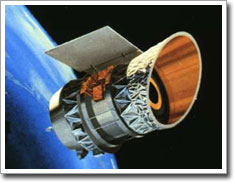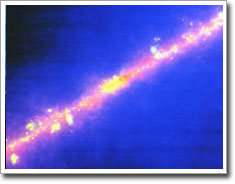| |
 |
| |
Artist's concept of the Infrared Astronomical Satellite.
+ Full image
|
|
| |
|
|
| |
 |
| |
The central portion of our Milky Galaxy.
+ Full image
|
|
|
|
|
In 1977, JPL again expanded its horizons of exploration. This time, rather than turning the lens on our home planet, the lab embarked on endeavors that would study the universe. NASA awarded JPL work on two important new tasks, the Infrared Astronomy Satellite and a camera for the Hubble Space Telescope.
The first space-borne infrared telescope was the Infrared Astronomy Satellite, launched January 26, 1983. A joint U.S./Netherlands/United Kingdom project, this mission conducted the first-ever all-sky infrared survey of the cosmos.
The mission had only an 11-month life due to the slow boiling-off of its coolant. During that time, the mission completed a survey of 98 percent of the sky. This permitted astronomers to compile the first nearly complete atlas of the sky at infrared wavelengths. It enabled identification of very old stars too cold to generate much visible light. The satellite also detected huge masses of dust, including at least one dust band orbiting a nearby star. Since planets form out of dust clouds, this meant that a star system could be forming new planets. No one had seen this before; to this point, astronomers had assumed all this dust existed, but they had never actually seen it. The infrared satellite confirmed that it really was out there.
|